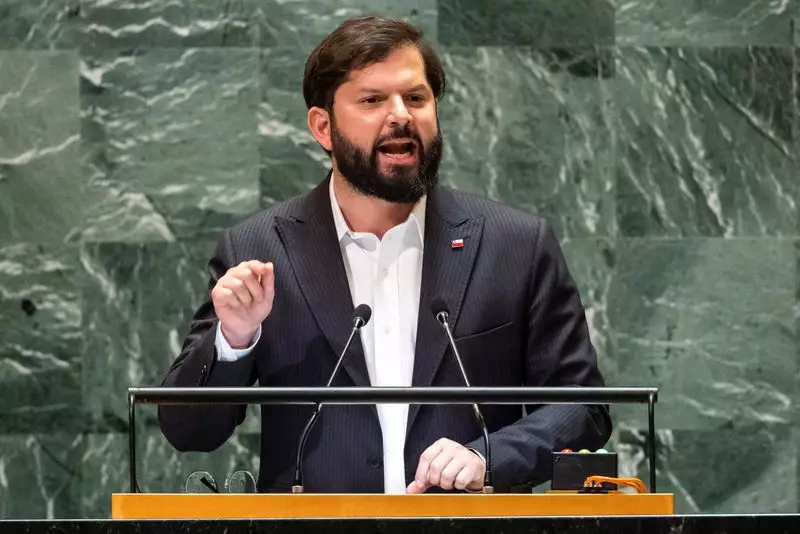In a significant announcement, President Gabriel Boric of Chile revealed an ambitious 2.7% increase in the government’s 2025 budget. This proposal, articulated during a national television address, aims not only to fortify the nation’s social frameworks—specifically in the realms of pensions, health care, and education—but also to emphasize security, which he marked as a primary concern of his administration. This dual focus reflects a strategic pivot in Chilean governance, which seems to be responding to public demand for enhanced safety measures amid evolving socio-political challenges.
Central to Boric’s budget proposal is an unprecedented allocation of $1.5 billion aimed explicitly at justice and security. This increase is characterized by an essential goal: to bolster police presence on the streets, enhance officer salaries, and significantly invest in the prison system. The President underscored that ensuring public safety is the foremost responsibility of his government, indicating a proactive stance toward the perceived increase in crime and insecurity in the nation. Notably, this emphasis on law enforcement marks a notable evolution in Boric’s administration, which previously veered towards more liberal policies.
In tandem with these security measures, President Boric’s administration is also gearing up to confront immigration head-on. Over the past few months, his approach has become significantly more stringent, focusing particularly on illegal migrants. Boric stated that his government would expel individuals who fail to comply with official biometric registration protocols. His remarks made at the United Nations General Assembly reveal a growing tension regarding immigration, particularly in light of the Venezuelan crisis, which has seen a large influx of migrants across South America. This policy shift signals a critical adaptation in response to court both domestic pressures and international humanitarian issues.
Beyond security concerns, the proposed budget reflects a commitment to social welfare, including significant enhancements in the health sector. Boric announced a remarkable 42% increase in resources allocated for Chilean immunization programs, highlighting the government’s dedication to public health in a post-pandemic world. Additionally, investments in education and cultural initiatives aim to elevate the overall quality of life for citizens, thereby addressing long-term national development needs and fostering a more educated workforce.
The financial context in which these proposals are being made cannot be ignored. The Chilean central bank’s recent forecasts project a modest inflation closure at 4.5% for this year, with hopes of reducing it to 3.6% in the following year. Coupled with a revised economic growth outlook, Boric’s administration targets a growth rate of 2.6%. These economic indicators will play a crucial role as the budget proposal advances to Congress, where lawmakers will deliberate for the next 60 days. With the recent passage of new tax legislation projected to inject an additional $1.2 billion into state revenues, the government’s fiscal capacity appears bolstered, setting the stage for implementation of these strategic policies.
President Boric’s budget proposal is not just a financial document; it represents a comprehensive strategy addressing the multifaceted challenges facing Chile today. By prioritizing security while concurrently investing in social programs, Boric is seeking to navigate the complexities of governance amidst shifting public concerns.

